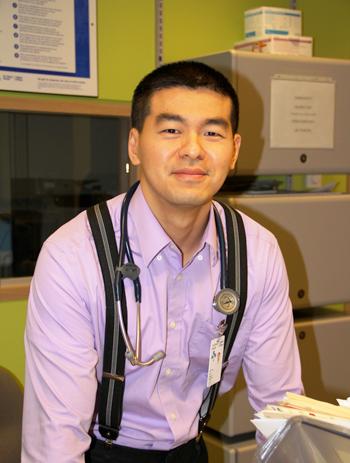Despite all the Movember handlebars and mutton chops, a study on gay and bi prostate cancer patients at the Ottawa Hospital is having trouble growing.
“Initially, the recruitment was fast. But now it has decreased and I don’t know why,” says Dr Tsz Kin (Bernard) Lee, the radiation oncology resident who initiated the study.
Lee says the study, which is being heavily publicized, is the first of its kind.
It started in July 2011 and researchers need at least 100 prostate cancer patients who were treated at the Ottawa Hospital. By calculation, says Lee, there should be up to 500 gay Ottawans with prostate cancer.
“We really want to talk to them,” he says.
There are fewer than 50 participants so far, he says.
“Our main goal for this study is to really identify an issue,” says Lee’s supervisor, Dr Rodney Breau, a prostate cancer surgeon.
There’s speculation that gay and bisexual men are physically, emotionally and psychologically affected by prostate cancer treatment differently than straight men, but there’s no data, says Lee.
The difference lies in the experience of treatment side effects, he says.
The study aims to understand what side effects are especially difficult for gay and bi men to deal with. When doctors know what treatments cause these side effects, they can help these men choose treatments that either won’t cause side effects or won’t cause them to such a great extent, Lee says.
It’s all about maximizing a patient’s quality of life, he adds.
Lee says he thinks anal bleeding is one of the particularly troublesome side effects for gay and bi men.
Radiation treatment causes scarring of the bowel wall, he says, and even normal bowel movement can scrape the wall and cause bleeding. For a straight man, this might not be such a big problem. They might only need to use an absorbent pad and wait for the condition to improve over time. But, for a gay or bi man who wants to be a bottom in anal sex, the bleeding can be very difficult to deal with, according to Lee.
“The psyche is affected because if you’re having sex and there’s lots of blood, then oftentimes both partners become afraid to do it,” he says.
But the hospital has no data about the effect anal bleeding has on gay and bi men. As well as making it hard to help a patient choose a treatment option, lack of data also prevents doctors from being able to advise men who have sex with men about when it’s safe to go back to having anal sex.
There’s no data because all the forms given to prostate cancer patients post-treatment come from a heterosexual perspective, Lee says.
These forms, called side-effect assessment tools, are usually questionnaires. Bruce Bursey, a gay participant in the study who had prostate cancer treatment six years ago, filled out the forms.
“The material always talked about wives and heterosexual behaviour,” he says. “A lot of it just didn’t apply to my experiences.”
Getting the information he needed to safely start having sex again after treatment was hard, he adds.
“When I had to deal with this — the mainstream cancer group — I had to stand out in front of 25 men and say, ‘I want to talk about anal.’ It’s like you’re coming out. Most of my gay friends who have gone through treatment said they just didn’t ask any questions. They just sat there and listened.”
Bursey says he thinks accrual for the study is slow because older gay people, the age group most likely to have prostate cancer, are often wary of the healthcare system because of past experiences with homophobic doctors. But the doctors running the study aren’t homophobic, he says.
“Evidence of this is that the hospital wants to do this study. They’re not doing this because gay people asked for it,” he says.
The study could be highly successful because of how open gay men are, Bursey says.
“Gay men are used to talking about their prostate and know what it is. They’re comfortable with it,” he says. “A straight man might not have ever had the experience of a prostate massage, whereas gay men at least know what this is.”
Lee mails out studies to people who get in touch with him. The package has questionnaires, a consent form and a prepaid envelope.
“It’s not one of these quick things on the internet saying, ‘Do you get a hard-on or not?’” says Bursey.
The whole process takes 35 to 40 minutes.
“Sometimes people look at research with skepticism, especially surveys, because they’re bombarded with that stuff,” Breau says. “But the goal of what we’re doing here is to improve patient care.”

 Why you can trust Xtra
Why you can trust Xtra


